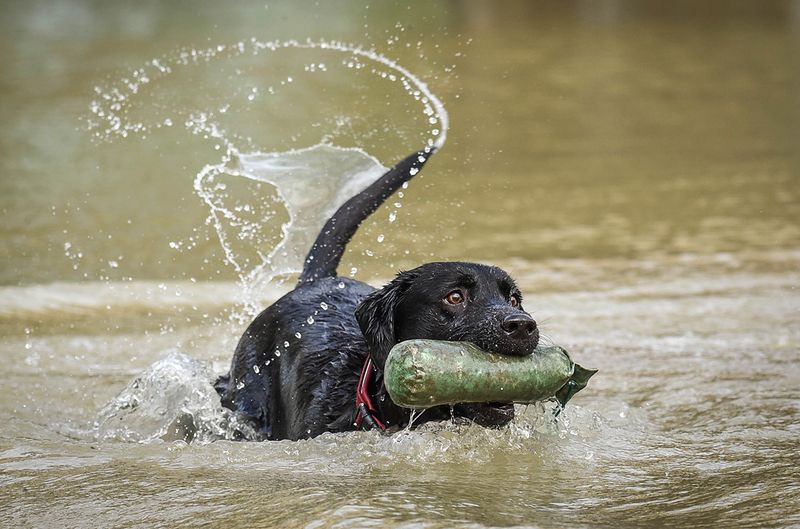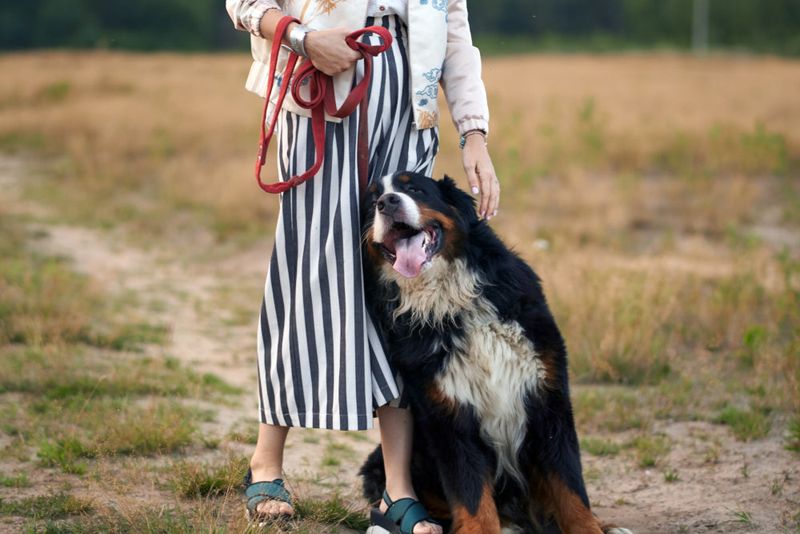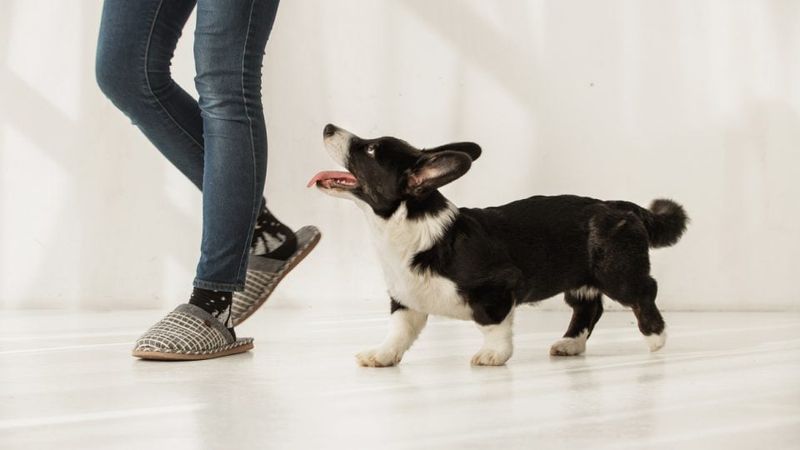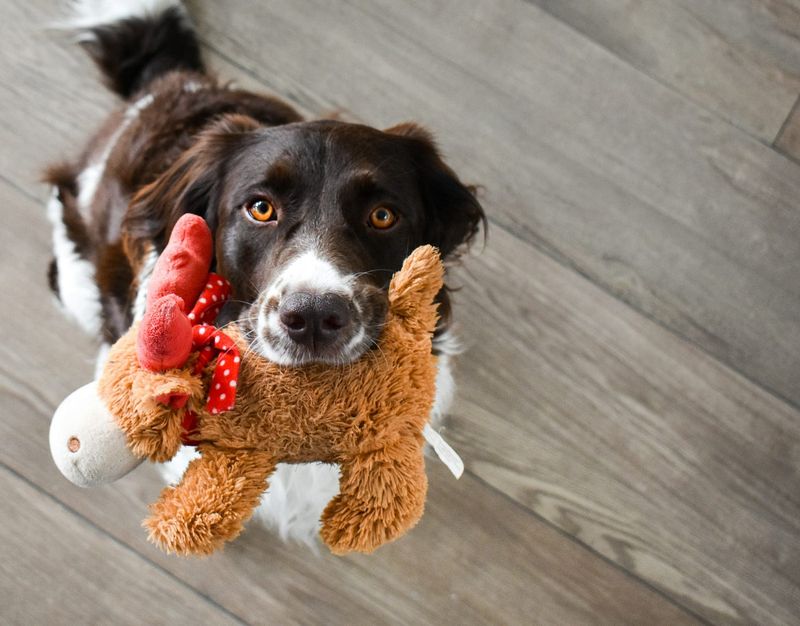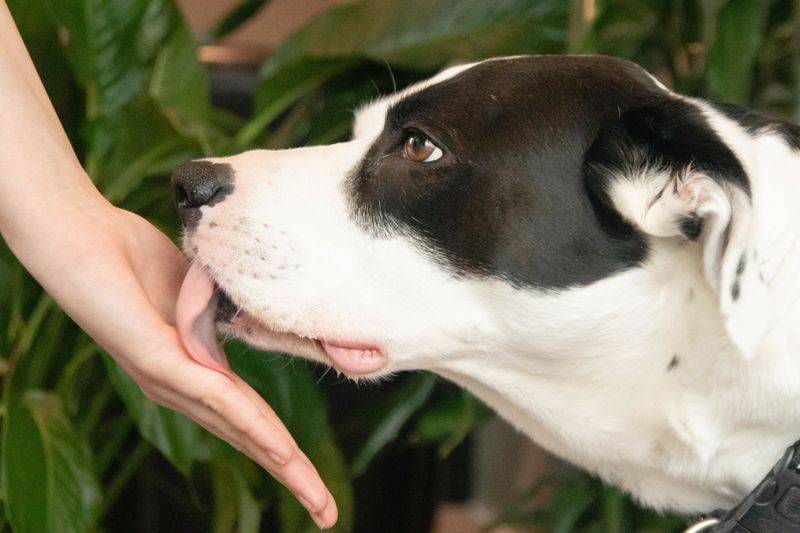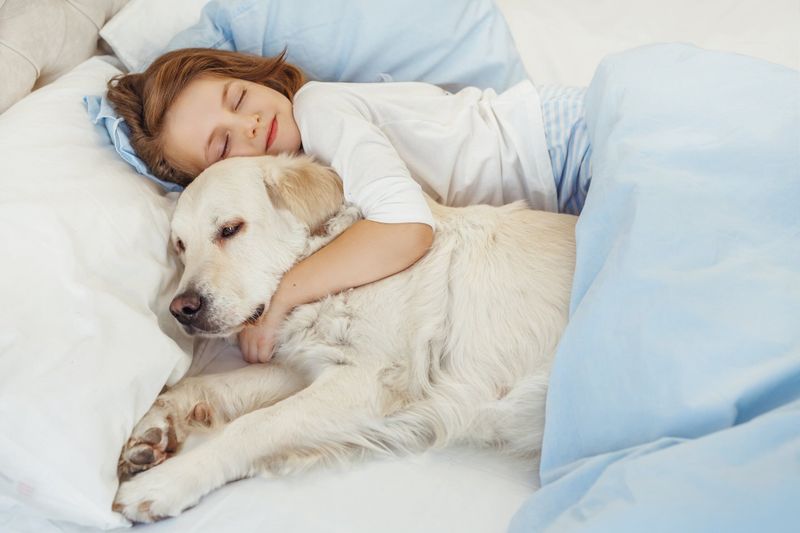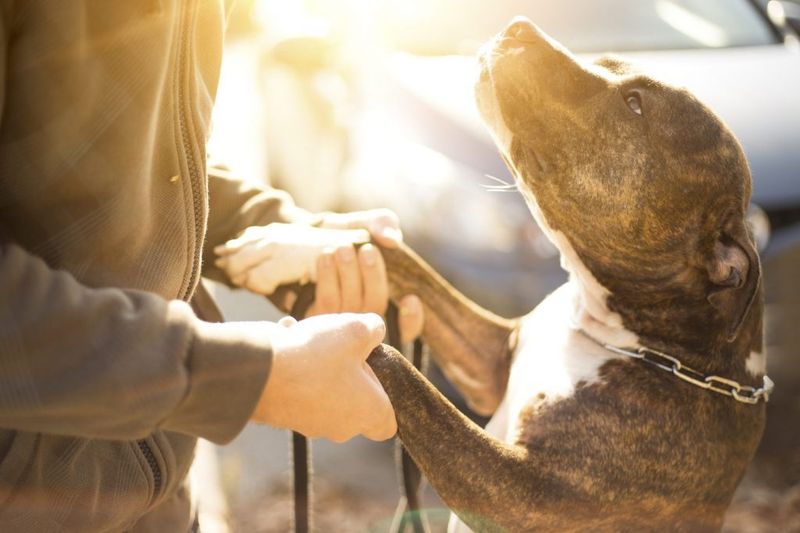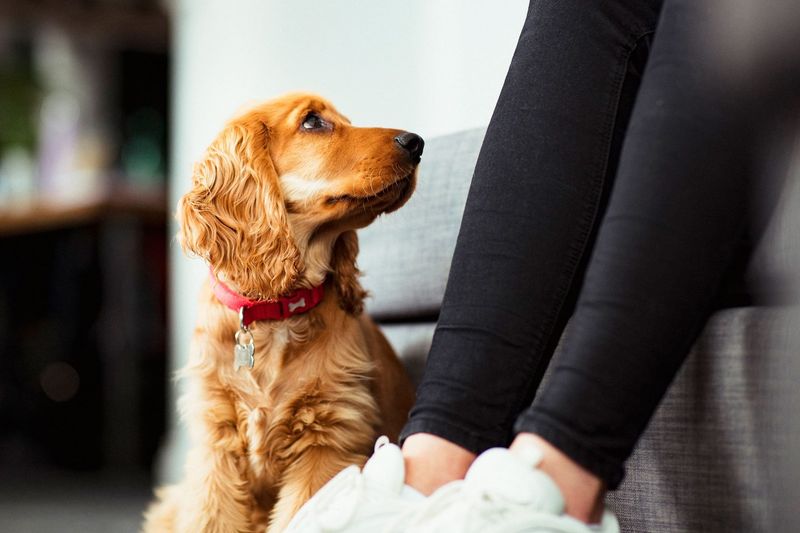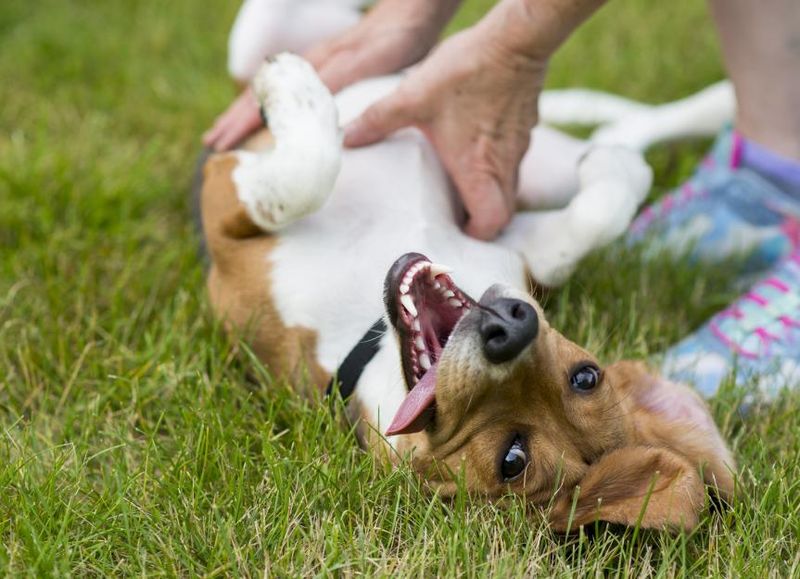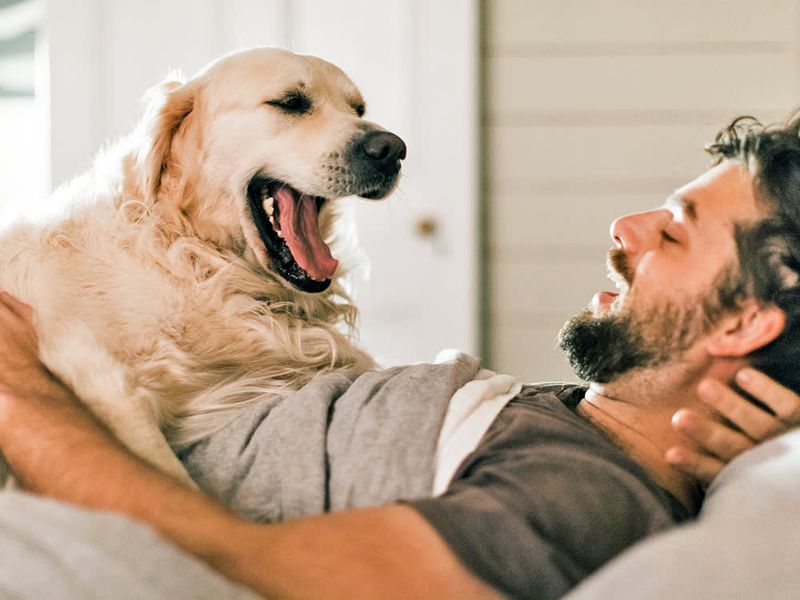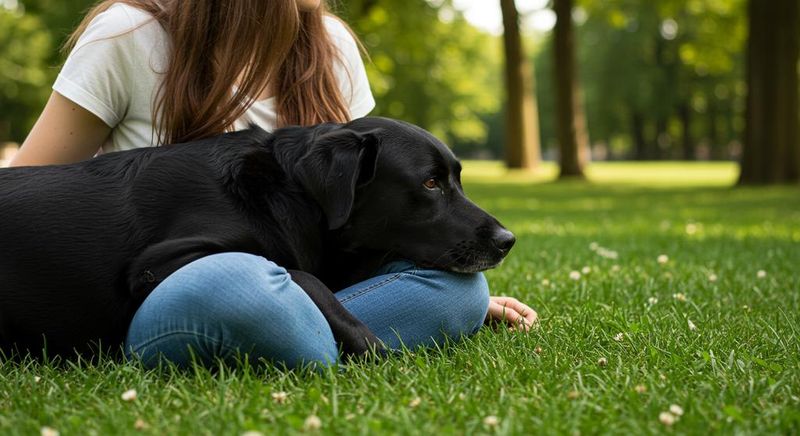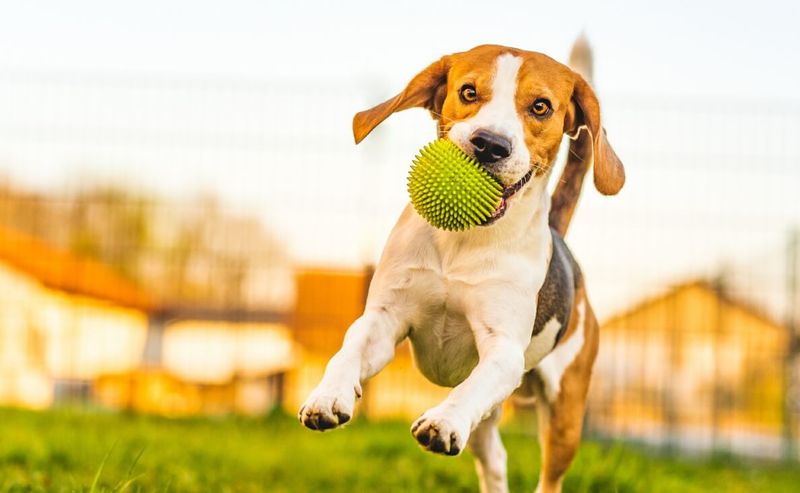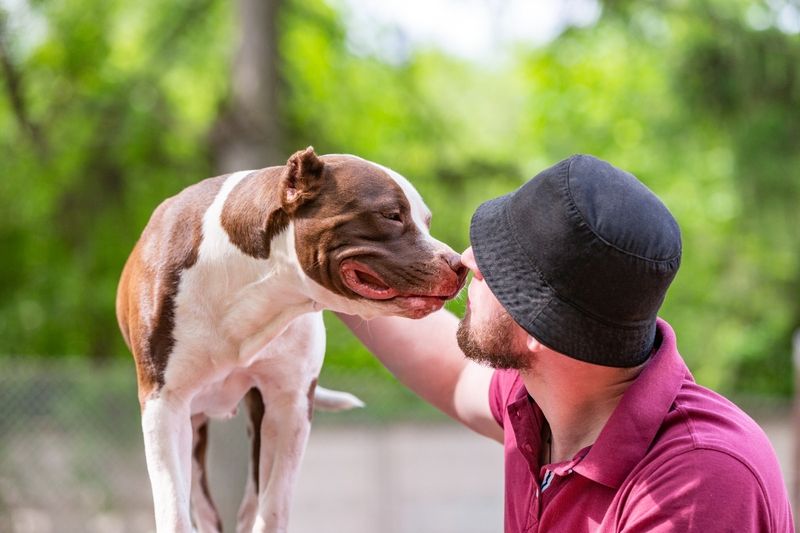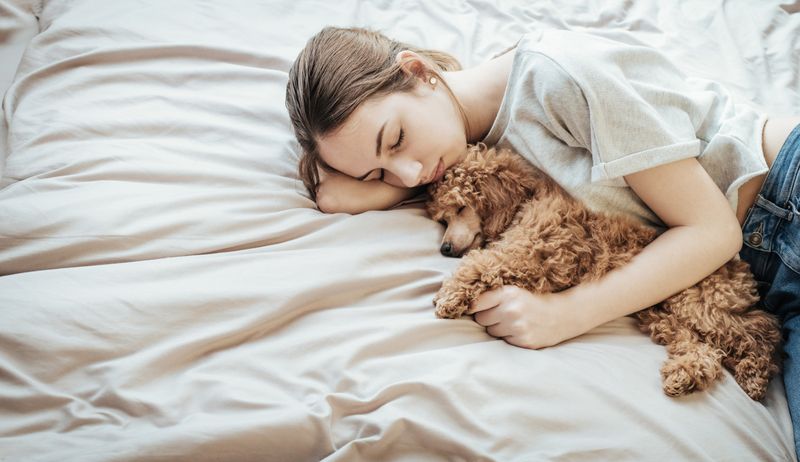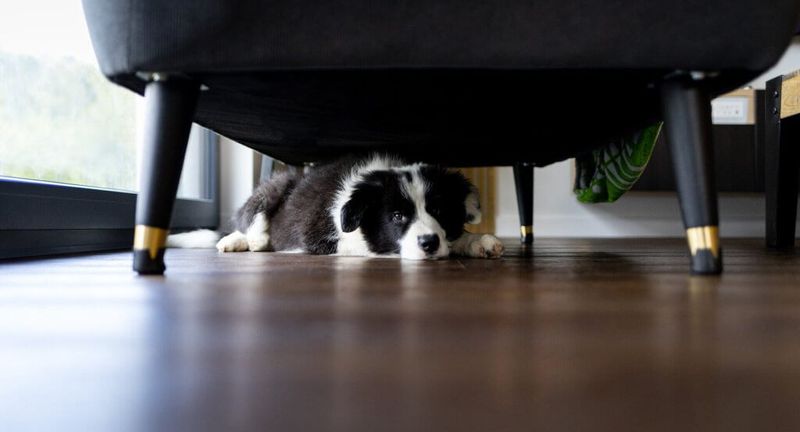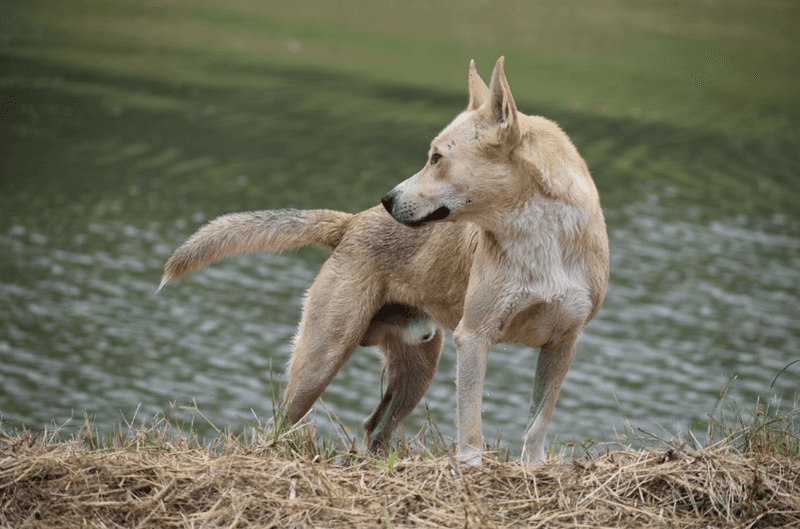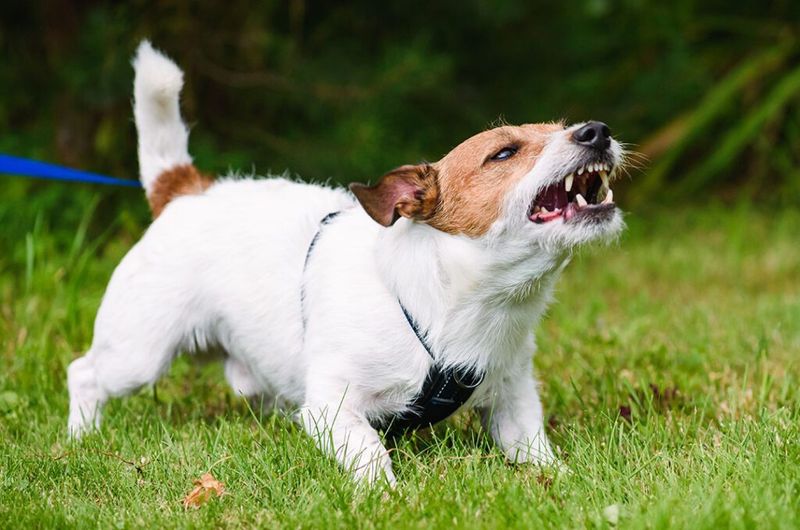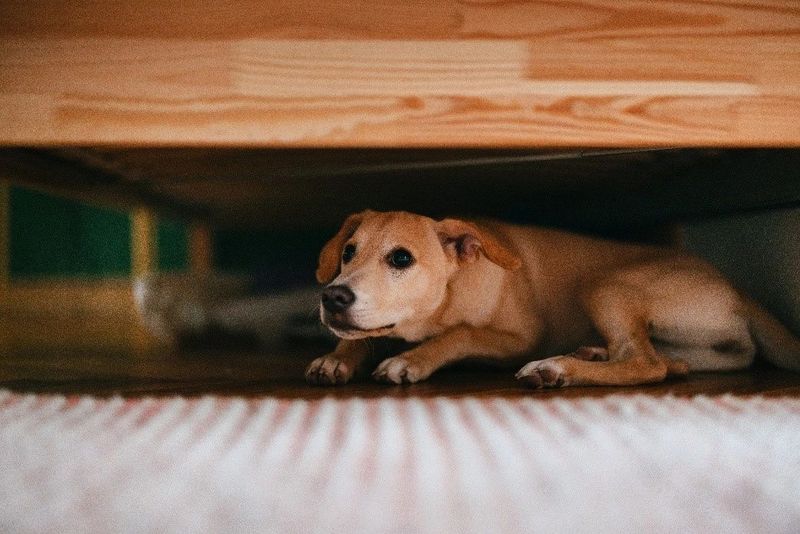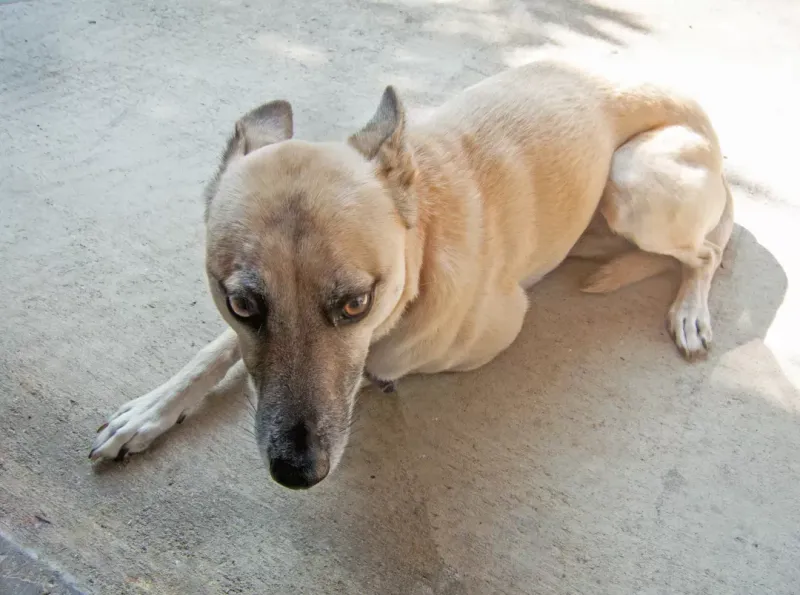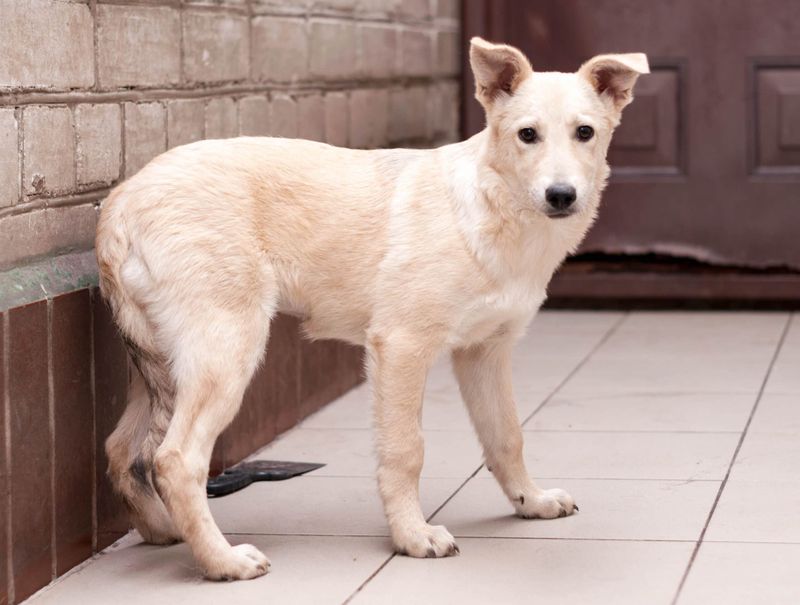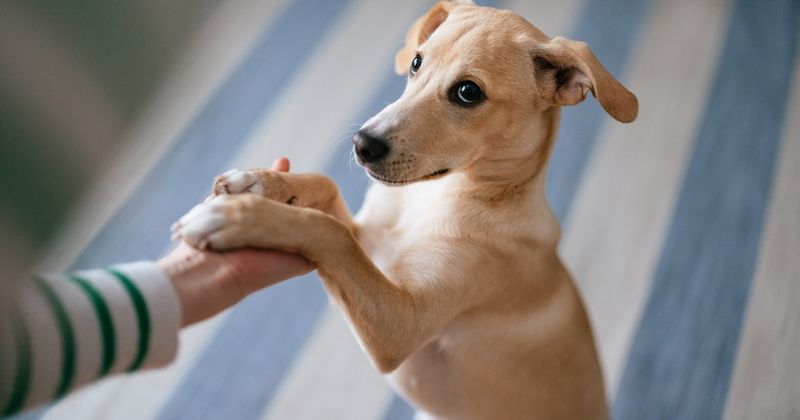Understanding your dog’s feelings can be both rewarding and challenging. Dogs express their emotions in various ways, and deciphering these signs can deepen the bond between you and your furry friend. Here are 15 signs your dog loves you, and 7 signs that say “not yet.”
Tail Wagging
Tail wagging is a classic sign of canine affection. It symbolizes happiness and excitement when they see you. A wagging tail accompanied by a relaxed body posture usually means your dog is comfortable and happy around you. Dogs wag their tails for many reasons, but a gentle, full-body wag often signifies love. Did you know? Different breeds have unique wagging styles, from slow and steady to fast and furious. Pay attention to the nuances in your dog’s tail wagging; it’s like their personal language, conveying emotions in a way words cannot.
Leaning on You
A dog leaning on you is more than just seeking warmth; it’s a sign of trust and love. This behavior suggests your dog feels secure and protected in your presence. Leaning is a way dogs say they want to be close to you, sharing their affection quietly. Some dogs lean gently, while others may press their weight firmly, signaling a deep bond. Interestingly, in pack behavior, leaning can be a form of support among dogs, showcasing their reliance on one another. It’s their way of saying, “I’ve got your back.”
Following You Around
Does your dog follow you from room to room? This behavior is often a sign of attachment and love. Dogs are social creatures, and following you is their way of staying close to their “pack leader.” It’s a compliment, showing they trust and want to be near you. This shadow-like following can be seen in many breeds, although some dogs are more independent. Remember, a dog that follows you everywhere is expressing a desire to be part of your world, sharing in your daily activities and adventures.
Bringing You Toys
When your dog drops a toy at your feet, it’s more than just playtime. It’s a gesture of love and trust. Dogs often share their prized possessions with those they care about, much like a child offering a favorite toy. It’s a sign they want to engage with you in a fun and meaningful way. Even if you’re not in the mood to play, accepting the toy acknowledges their affectionate gesture. This behavior illustrates the bond between you, where sharing becomes a language of love and companionship.
Licking You
Licking is a universal dog sign of affection. It’s akin to a human kiss, showing love and respect. When a dog licks you, it’s an instinctive behavior rooted in puppyhood, where mothers lick their pups for care and bonding. Beyond affection, licking can also be a way for dogs to taste your scent, strengthening their connection to you. Some dogs will lick your face, hands, or even feet, each lick conveying a message of trust and love. It’s their way of saying, “You’re special to me.”
Sleeping Next to You
If your dog chooses to sleep next to you, it’s a significant sign of love and trust. Sleeping is a vulnerable state, and by cuddling up, they’re showing they feel completely safe with you. This behavior stems from the pack mentality, where closeness provides warmth and protection. Dogs that prefer to sleep near their humans often exhibit deep loyalty and affection. It’s their way of being part of the family, ensuring they’re close even in rest. This simple act is a testament to the bond you share.
Excited Greetings
When you come home to a dog that greets you enthusiastically, it’s a heartwarming sign of love. Jumping, wagging, and happy barks are their way of saying they missed you. Dogs express their joy in seeing you through animated greetings, showcasing their attachment. Did you know? Some dogs even recognize the sound of your car or footsteps, gearing up for your arrival. This level of excitement is a testament to the bond you share, where each reunion is a celebration of companionship and love.
Eye Contact
Sustained eye contact between you and your dog is a profound expression of love and trust. It’s comparable to a hug or a gentle touch, fostering a special connection. Eye contact releases oxytocin, the “love hormone,” in both humans and dogs, deepening your bond. This behavior indicates your dog is comfortable and appreciative of your presence. While some dogs are naturally more inclined to maintain eye contact, those that do are offering a glimpse into their soulful affection. It’s a silent, yet powerful way to communicate.
Rolling Over for Belly Rubs
When a dog rolls over and exposes its belly, it’s a deep sign of trust and affection. This vulnerable position shows they’re comfortable and secure with you. Belly rubs are not only enjoyable for dogs but also a bonding moment, where trust is reciprocated. This behavior highlights their openness and the love they feel. Interestingly, in the wild, exposing the belly is a submissive gesture, yet in domestic life, it transforms into an affectionate act, where love and trust intertwine.
Yawning Together
Sharing a yawn with your dog might seem trivial, but it’s a sign of emotional bonding. Dogs often mimic the actions of those they feel close to, and yawning together indicates empathy and connection. This behavior suggests a level of attunement where your dog is in sync with your emotions. Some studies even suggest that dogs, like humans, can “catch” yawns as a form of social bonding. Such small moments of mirroring reveal the depth of your relationship, where even a yawn becomes an affectionate gesture.
Resting Their Head on You
A dog resting its head on you is a quiet, affectionate gesture. It symbolizes trust and a desire for closeness. This behavior indicates your dog is relaxed in your presence, seeking comfort and connection. While some dogs may rest their head gently, others lean in with more weight, each style conveying love. It’s their way of saying, “I’m at peace with you,” creating a bond that’s strengthened in silence. Such intimate moments reflect the unique language of love shared between you and your furry companion.
Playing Fetch
Playing fetch is more than a game; it’s a bonding activity that reflects your dog’s affection and trust. By bringing the ball back, they’re engaging in a shared experience, showing they want to interact with you. Fetch is a form of communication, where each throw and return builds a rapport. While some dogs are naturally inclined to fetch, others learn this behavior as a way to connect and demonstrate loyalty. This playful interaction strengthens your relationship, where love is expressed through a simple game.
Nudging You with Their Nose
A gentle nudge from your dog’s nose is a charming sign of affection. This behavior is a way of saying “I’m here,” seeking attention and interaction. Nose nudges are often accompanied by soft eyes and a relaxed demeanor, indicating trust and love. Dogs use their noses to explore the world, and by nudging you, they’re including you in their sensory experience. This act of inclusion and connection highlights the bond you share, where even the smallest gesture becomes a message of love and companionship.
Sharing Your Bed
Allowing your dog to share your bed is a mutual sign of affection and trust. Sleeping alongside you shows they feel safe and included in your personal space. This behavior is rooted in their pack instincts where sleeping together meant warmth and security. Sharing your bed is a testament to your bond, where both of you find comfort in each other’s presence. Not all dogs prefer this, but those that do are expressing their deep attachment, where night time becomes a continuation of your companionship.
Grooming You
Grooming is an intimate behavior, often seen between dogs, but when extended to you, it’s a profound sign of love. When your dog licks your hair or skin, they’re treating you as part of their pack. This behavior strengthens the bond and reflects a deep level of trust and affection. In the wild, grooming is a social activity, promoting group cohesion and care. By grooming you, your dog is affirming your place in their world, where love is expressed through nurturing actions, creating a bond that’s both physical and emotional.
Hiding from You
When a dog hides from you, it may indicate uncertainty or fear. This behavior suggests they’re not yet comfortable or trusting. It’s important to approach them gently and patiently, building trust over time. Hiding can stem from various factors like past experiences or new environments. Understanding their triggers can help ease their fears, transforming uncertainty into confidence. While hiding isn’t a sign of love, it’s an opportunity to show empathy and care, paving the way for a more secure bond in the future.
Avoiding Eye Contact
Avoiding eye contact is a subtle sign your dog is still unsure or anxious. Unlike humans, direct eye contact can be intimidating for dogs, especially if trust isn’t fully established. This behavior indicates they’re not yet ready to open up, requiring patience and understanding. By respecting their space and gradually building confidence, you can help them feel more secure. Avoiding eye contact isn’t a lack of affection but a signal to tread gently, nurturing their comfort and encouraging an environment where love can flourish over time.
Growling
Growling is a clear signal your dog isn’t comfortable or trusting yet. It’s their way of expressing discomfort or fear, not aggression. Understanding the context of the growl helps in addressing their concerns. Growling might occur around new people or situations, indicating insecurity. Respond with calmness, reinforcing positive experiences to build trust. This vocalization is an opportunity to deepen your relationship by respecting their boundaries. With time and patience, growling can transform into a language of confidence and trust, reflecting a journey toward love and affection.
Cowering
A cowering dog is expressing fear or uncertainty. This behavior is often a response to past negative experiences or unfamiliar situations. Cowering is a protective stance, indicating they don’t yet feel safe. Approach them with kindness and patience, offering reassurance without forcing interaction. This behavior isn’t a rejection but a call for understanding and empathy. By creating a positive environment and building confidence gradually, your dog can overcome their fears. Each step forward is a milestone in your journey together, turning uncertainty into trust and affection.
Ears Back
Ears pinned back is a subtle sign your dog is feeling nervous or unsure. This body language indicates they’re not yet fully comfortable or trusting. It’s a common response to new environments or stressful situations. By observing their cues and approaching with a calm demeanor, you can help ease their anxiety. Ears back isn’t a lack of love but a request for time and patience. Building a foundation of trust requires understanding these signs and responding with empathy, allowing love and confidence to grow naturally over time.
Tail Tucked
A tucked tail is a clear indicator of fear or anxiety. This behavior suggests your dog isn’t yet comfortable or confident in their surroundings. It’s a protective gesture, and understanding the root cause is essential. Approach with kindness, providing a supportive environment to help them overcome their fears. While a tucked tail isn’t a sign of affection, it’s an invitation to build trust and security. By nurturing their confidence and offering reassurance, you pave the way for a relationship filled with love and trust, where the tail eventually wags freely.
The Playful Paw Tap
In the realm of canine affection, the playful paw tap speaks volumes. Imagine your furry companion gently tapping your hand with its paw, playfully seeking your attention. This gesture is not just an invitation to play; it signifies trust and a growing bond.
When your dog uses its paw to connect with you, it’s akin to a child reaching out for a reassuring touch. It’s a reminder of their desire for closeness and interaction.
Interestingly, this behavior often correlates with a dog’s comfort level in its environment, showcasing their relaxed and happy state.

